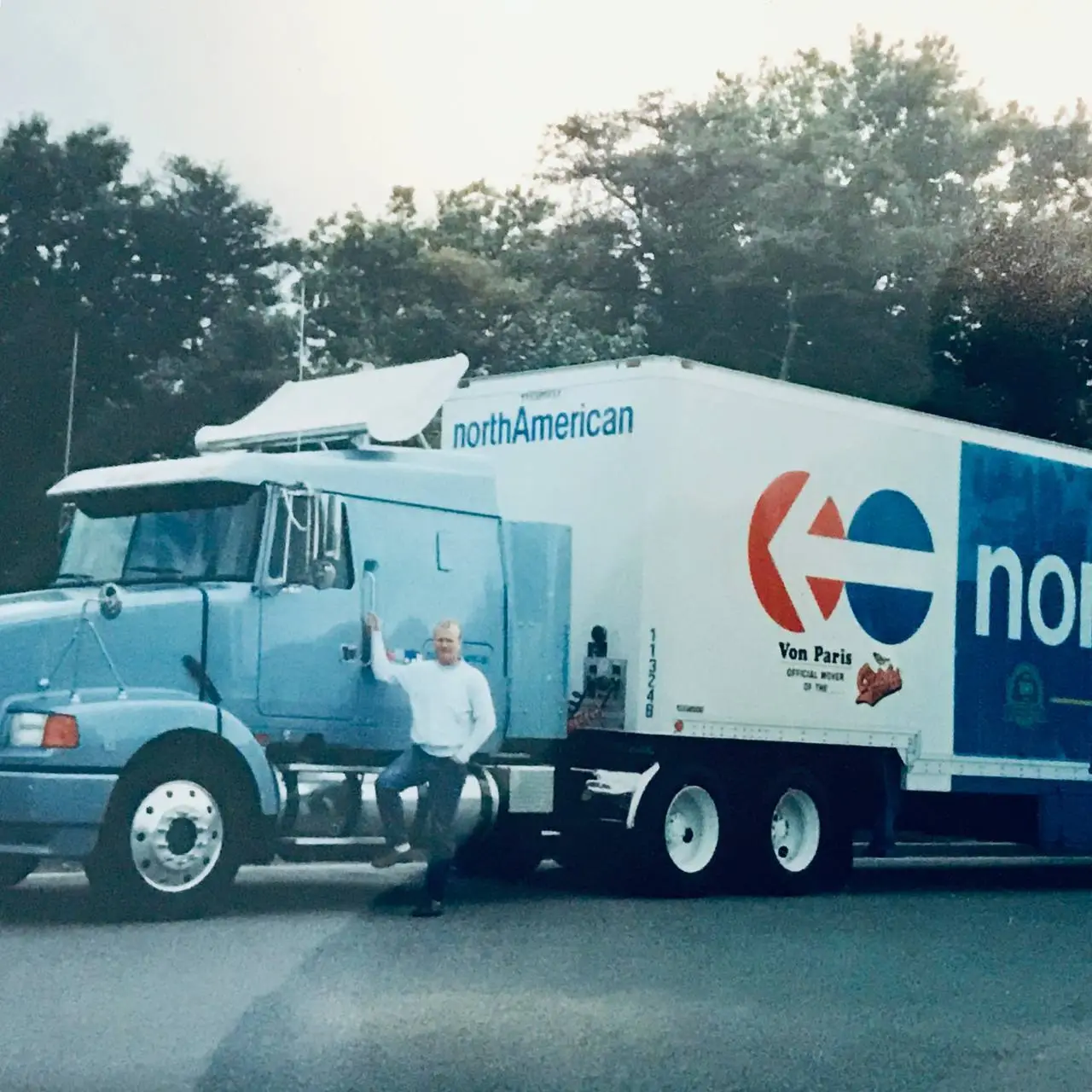

How Much Weight Can a Truck Carry
One of the most frequent questions we hear from businesses is how much weight a truck can carry. The question may seem simple enough, but the answer is a bit more complicated.
- Weight Capacity
- Weight Classifications
- Do I Need A Commercial License To Drive A Semi-Truck?
- What is a box truck’s weight capacity?
- How Much Weight Can a Flatbed Carry?
- How Much Weight Can a Dry Van Carry?
- Step Deck Weight Capacity
- How Much Weight Can a Reefer Carry?
-
Max Weight Capacity on Hotshot
- Rely on Us and Drive: We’ll Do the Rest
To adequately respond, our dispatchers must take several things into consideration. The volume of the load is at the top of the list. We also consider whether the products require protection from the elements or must be kept at a specific temperature. Choosing the right option is crucial to ensuring safe end-to-end transport.

| Type of Truck | Purpose/Uses | Max Weight Capacity |
|---|---|---|
| Box | Hauling large items such as appliances and furniture | 26,000 pounds |
| Flatbed | Transporting heavy loads not compromised by bad weather or rough roads | 48,000 pounds |
| Dry Van | Fully enclosed semi-trailer used to carry palletized, boxed, or loose freight | 45,000 pounds |
| Step Deck/Drop Deck | Commercial trailer for hauling tall cargo exceeding legal height limit for a traditional flatbed | 48,000 pounds |
| Reefer | A refrigerated/heated trailer used to transport cold or hot items | 45,000 pounds |
| Hotshot | Class 3, 4, or 5s pulling a flatbed or other trailer for extra capacity | 16,500 pounds |
Weight Capacity
Understanding the rules and regulations about truck weight capacity are tricky. Our knowledgeable dispatchers consider several factors when matching haulers with specific loads. Federal regulations are among the considerations.
How much a truck can haul is known as its payload capacity. This is the amount of additional weight that can be added to the truck beyond its empty weight. Most semi-trucks with trailers weigh between 14,000 and 16,000 pounds when unfilled. Federal limits cap the Gross Combined Weight Rating (GCWR) of these kinds of trucks to a maximum of 80,000 pounds. States have their own weight capacity guidelines, some allowing greater load limits than the federal regulations.
Weight Classifications
There was a time when referring to the carrying capacity of a truck using the phrases half-ton, three-quarter-ton, and one-ton was a straightforward way to simplify things. As the manufacturing industry got more competitive, these categories were more of a guide than an accurate representation of the truck’s capabilities.
Over time, payload capacity constraints evolved into titles that grouped trucks according to their relative sizes rather than their capabilities. These initial weight restrictions may be significantly exceeded by the contemporary vehicle. Historically, a half-ton truck could carry up to 1,000 pounds, a three-quarter-ton pickup could carry up to 1,500 pounds, and a one-ton pickup could carry up to 2,000 pounds. These maximum weight capacities have since been reduced.
Trucks may also be divided into light-duty, medium-duty, and heavy-duty trucks. These categories can be further subdivided into ranges such as a half-ton, etc. This may offer you a basic notion of how much you can carry, but you should keep in mind that this is merely a guideline and not a hard and fast rule.
- Light-Duty Trucks
According to the Federal Highway Administration (FHWA), a light-duty truck is defined as a vehicle that has a gross vehicle weight rating of fewer than 10,000 pounds. Trucks that meet neither of these requirements are excluded from consideration: those with more than two axles or six or more tires.
The Moter Vehicle Pollution Simulator, often known as MOVES, is responsible for classifying light-duty vehicles according to federal emission control requirements. According to this classification, light-duty vehicles have a gross vehicle weight capacity (GVWR) of up to 8,500 pounds, independent of their FHWA rating. The class ratings are another place where this may be seen. This is the classification that most people are most likely to be acquainted with since it is the classification that vehicle manufacturers will typically use when classifying a light-duty truck as a half-ton truck.
Trucks classified as light-duty are separated into two classes: Class 1, which includes vehicles with a GVWR of fewer than 6,000 pounds, and Class 2, which includes vehicles with a GVWR of fewer than 10,000 pounds.
Class 2 is further subdivided into Class 2A, which refers to automobiles weighing 6,001 and 8,500 pounds, and Class 2B, which relates to cars weighing between 8,500 and 10,000 pounds. Trucks that fall into the class 2A category are sometimes referred to as light-duty trucks, while those that fall into the class 2B category are frequently referred to as light heavy-duty trucks.
As can be seen from these two cases, the vehicles now surpass the criteria used to classify them in the past. Depending on the make and model, a half-ton pickup may currently haul more than a ton of cargo. In contrast, a midsize pickup truck is readily capable of hauling a half-ton, and some models can even handle up to three-quarters of a ton.
- Medium-Duty Trucks
Many different categories may be used to describe medium-duty vehicles. These kinds of cars are often used in vocational or employment settings. They are the ones that are meant to transport larger weights than the others. This categorization is used rather often in the transportation and logistics sector. There are still some medium-duty vehicles on the road that are not used for commercial purposes, despite the majority of them being used for such.
The GVWR may vary from 10,001 to 20,000 pounds. to 26,000-lbs. The following are a few illustrations showcasing a diverse variety of medium-duty vehicles.
- Heavy-Duty Trucks
Trucks with a gross vehicle weight rating (GVWR) of more than 26,001 pounds are considered heavy-duty trucks. These automobiles are going to be used for business purposes. Trucks such as dump vehicles, cement mixers, utility trucks, and tractor trucks designed to haul dry vans or refrigerated trailers are examples of this kind of vehicle. If you want to drive any of these vehicles, you are going to require a commercial driver’s license.
Do I Need A Commercial License To Drive A Semi-Truck?
When determining whether or not you need a CDL, you will need to consider the gross vehicle weight rating (GVWR) of the truck, the GVWR of the trailer, and the combined GVWR of the truck and trailer. If the GVWR of the trailer is 10,001 pounds or more and the GVWR of the vehicle and trailer together is 26,001 pounds or more, then you will require a commercial driver’s license (CDL). This covers standard pickup trucks and those capable of towing trailers.
Despite this, there are certain ways to get around the DOT’s restrictions. Farmers, select military drivers, and drivers of off-road motorized construction equipment who satisfy specific standards are examples of those who fall into this category. However, this is not an exhaustive list.
For example, if the car is registered as a farm vehicle, you, your family, and your farm staff are permitted to use that vehicle inside the state in which the farm is located or up to 150 miles outside of the state where the farm is located in. However, you will be required to get a CDL if the semi-truck is used for commercial purposes or if it is driven more than 150 miles outside the city limits. Please visit the FMCSA’s website to get more and more specific information on applicability.
What is a box truck’s weight capacity?
Box trucks come in a variety of sizes, but they all share the same basic shape. They are ideal for small loads of goods that require protection from the outside elements. Furniture and appliances fit nicely in a box truck, as do perishable foods and other consumer goods. They most often are used as a cost-effective logistics option for less-than-truckload (LTL) freight. Most box trucks have a cabin that is separate from the cargo area, while some newer models come with a door between the two sections.
Weight is a factor when determining whether a box truck is the right fit for your transportation needs. The maximum box truck weight capacity is 26,000 pounds. Dimensions are also important. Box trucks range between 10 and 26 feet in length.
How Much Weight Can a Flatbed Carry?
A flatbed truck is exactly what you would imagine. It is a large transport vehicle with a flat body. It does not have a roof or sides to protect its cargo from the elements.
Flatbed trucks are the preferred method of transporting heavy loads that will not be compromised by bad weather or rough roads. Since the beds are not enclosed, they are perfect for carrying cargo that would be too wide for trucks with doors and sides. Their versatility makes them a popular option for moving freight with dimensions of 48 to 53 feet in length, 8.5 feet in width, and 8.5 feet in height. The maximum flatbed truck weight capacity is 48,000 pounds.
How Much Weight Can a Dry Van Carry?
Dry vans are another type of transport truck that needs little explanation. These enclosed freighters are used to protect consumer goods and products that are sensitive to the elements. Loading from the rear is required with this kind of truck. For that reason, loading docks are the preferred method for getting the cargo on board. Dry vans range between 48 and 53 feet long, with a width of 8.2 feet and a height of 8 feet. The maximum weight capacity for one of these rigs is 45,000 pounds.
Step Deck Weight Capacity
Sometimes called a drop deck, these commercial trailers are best used for hauling tall cargo that exceeds the legal height limit for a traditional flatbed truck. These trucks have a bottom and top deck and are between 48 and 53 feet in length. The step deck trailer is 8.5 feet wide and can accommodate a maximum legal freight height of 10 feet and a weight of up to 48,000 pounds.
How Much Weight Can a Reefer Carry?
Refrigerated trailers and reefers are temperature-controlled and used to transport cold or hot items that must remain at a consistent temperature. They are more commonly used with chilled or frozen products than warm ones. The inside temperature of a reefer is adjustable depending on the outside weather. Their trailers are the same size as other trucks like flatbeds and dry vans at 48 to 53 feet in length. The maximum width is 8.2 feet and the maximum height is 8 feet. Between 42,000 and 45,000 pounds is the max payload.
Max Weight Capacity on Hotshot
When transporting freight that needs at least 40 feet of deck space, hotshots are your best choice. They are affixed to class 3, 4, or 5 trucks that are dragging a flatbed or another kind of trailer for additional carrying capacity. They are used for less-than-truckload (LTL) shipments the vast majority of the time. The pickup truck’s maximum weight capacity is up to 16,500 pounds.
Rely on Us and Drive: We’ll Do the Rest
At Logity Dispatch, we believe honesty is the best policy. Independent truck drivers and businesses know they can trust us to save them time and money. Our dispatchers have broad experience in the field and employ streamlined processes designed to focus on a personal approach to service. Since 2015, we have matched loads to the right size truck to ensure shipments arrive safely and on time. Give us a call at +1 (302) 467-19-60 or drop us a line and a member of our team will be in touch to schedule a no-obligation consultation.







